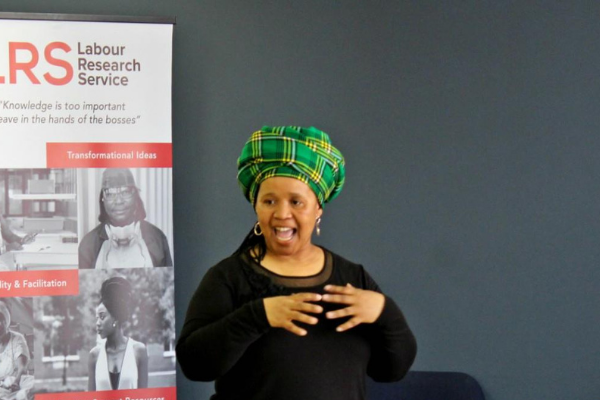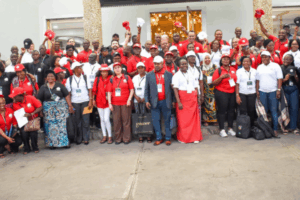What is collective bargaining?
C154, the ILO convention concerning the promotion of collective bargaining, defines collective bargaining as follows:
…the term "collective bargaining" extends to all negotiations that take place between an employer, a group of employers or one or more employers' organisations, and one or more workers' organisations, for: (a) determining working conditions and terms of employment; and/or (b) regulating relations between employers and workers; and/or (c) regulating relations between employers or their organisations and a workers’ organisation or workers' organisations.
ILO
Why is gender important in collective bargaining?
Men are more likely to be in paid employment than women in South Africa. According to Statistics South Africa, 44 in every 100 employed individuals are women and the statistics haven’t changed much over a decade. Still, women are far better off today than they were 63 years ago when they marched against unjust pass laws and their contributions at work should be valued.
In contrast, a longer equality agenda as described by British academic and feminist, Cynthia Cockburn, calls for the transformation of organisations. This requires changes in organisational and occupational structures, cultures, practices, norms and value systems in order to accommodate women. ‘Adding women on‘ to existing agendas encourages a focus on ’women’s measures’. In practice, women’s measures can be double-edged for gender equality. Some measures might, for example, reinforce the premise that women have and should continue to have primary responsibility for childcare and other dependent care, and consequently a ‘less committed’ attachment to employment than men. On that analysis, enhanced maternity or childcare leave for women, although facilitating women’s continued participation in waged work, may be problematic for equality. Provisions targeted at men, for example, paid paternity leave, which could help foster a greater sharing of social and occupational responsibilities and help challenge the ’male norm’ in the organisation of paid work, might be considered to potentially offer more in terms of gender equality. Measures which don’t focus on the parent as the problem, but rather focus on the problems posed can have a similar impact.
Bargaining for gender equality - Gender equality should be central to everything we do
- Collective bargaining can be used as an equality tool for promoting equality bargaining. Collective bargaining and gender equality should be interlinked in key documents such as labour laws and codes of good practice, collective bargaining agreements, equality clause and anti-discrimination legislation.
- Collective bargaining can be a powerful means to narrow the gender pay gap, address low pay, upgrade the value of women’s work and provide arrangements that allow for balancing work and family life.
- Promotes dual and targeted approach to equality bargaining: Gender-specific topics and agreements, for example, equal pay for work of equal value, maternity protection and gender-based violence, can be mainstreamed in all collective agreements.
- Freedom of association is a key gender equality issue: Feminisation of unions and employment, including precarious work, is the key to equality bargaining because it means that trade unions matter to women.
What will it take for trade unions to make collective bargaining a mechanism for the active promotion of gender equality at work?
Harnessing collective bargaining as a mechanism for the promotion of gender equality implies a radical change in the traditional platforms and approaches of much collective bargaining and poses challenges to the existing nature of many trade unions.
The nature of the challenge is going beyond “adding on women”. Collective bargaining is an additional tool for the promotion of equality. It requires a more radical transformation of unions than simply adding women on to existing bargaining agendas and as union members.
Exercises
Collective agreements
Identifying gender issues in the collective agreement
Promoting gender equality in the world of work
- Promoting gender equality in the world of work does not end with the signing of a collective agreement. Follow up to ensure the awarded rights are implemented.
- Ensure that the negotiated policies, rights and benefits are communicated to all workers, including non-permanent workers.
- Collect data regularly to monitor the number of women and men that are hired, promoted and dismissed, as well as the number of workers in all job categories, salary levels and training programmes.
- Regularly monitor the implementation and effectiveness of collective bargaining policies, rights and benefits. Think forward to what can be achieved during the next round of collective bargaining.
- Deal with equality issues in education and training programmes.
- Publicise the work done your union has done on behalf of women as an organising strategy. Also, publicise the union’s objectives for bargaining and the strategies for achieving them.
RELATED ARTICLE
Four reasons to use the LRS Agreements Database








